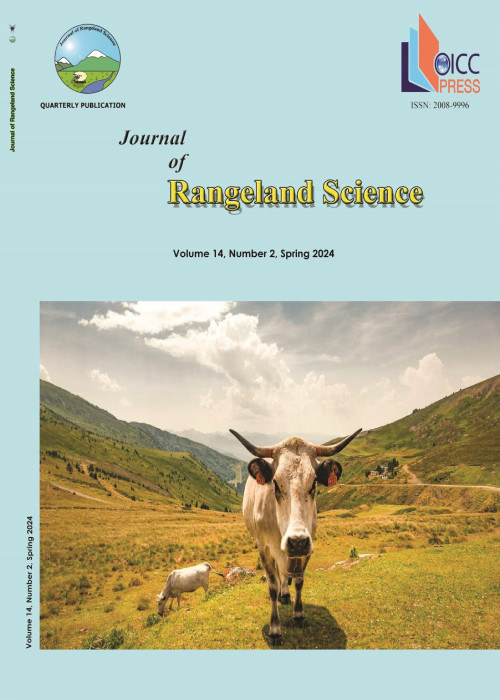Comparative Study of Species Diversity in different Land Use Units of the Borana Lowlands, Southern Oromia, Ethiopia
Author(s):
Article Type:
Research/Original Article (دارای رتبه معتبر)
Abstract:
Quantitative study of species diversity across different land use units and districts is important to document status of local plant biodiversity, to evaluate impact of management and for planning future management. This study aimed at determining impacts of land use units on species diversity and spatial distribution of species in two districts of Borana zone, Oromia, Ethiopia. Stratification and systematic random sampling techniques were used for data collection. Plot size of 500 m2 for woody species and subplots of 0.25 m2 for herbaceous species and soil samples were used. Data was analysed using both descriptive and inferential statistics. Shannon diversity index and Simpson index were determined. Relationships between vegetation and environmental variables were analysed using Redundancy Analysis (RDA) and Canonical Correspondence Analysis (CCA). The overall mean alpha, beta and gamma diversities were 29.2, 2.5 and 102.6, respectively. Average total number of species in enclosures and open access grazing sites was 113 and 96 species, respectively. Enclosures or relatively protected land use units (Kalos) had more species diversity than their corresponding open access grazing lands (Worras). Shannon diversity index ranged from 3.11 in the grazing land for dry livestock to 3.78 in the Web grazing land for lactating cattle. Similarly, Simpson index of dominance ranged from 0.034 in the Web Worra to 0.089 in grazing land for dry livestock (Foora). Kalos had higher Simpson diversity index than their corresponding Worras. Soil nutrients varied across land use units. Cation Exchange Capacity (CEC) was higher in enclosed than in open access grazing land use units. The study also showed that there was significant variation in P, Ca, CEC, silt and sand across the two districts (p<0.05). RDA and CCA results revealed that altitude, OM, K and N were the most important environmental variables that significantly accounted for the spatial distribution and abundance of species. It was concluded that enclosures had contributed to increased species diversity. Promoting the area enclosure as a viable strategy for biodiversity management and rehabilitation of rangelands were recommended as a result of this study.
Keywords:
Language:
English
Published:
Journal of Rangeland Science, Volume:10 Issue: 3, Summer 2020
Pages:
328 to 340
magiran.com/p2129724
دانلود و مطالعه متن این مقاله با یکی از روشهای زیر امکان پذیر است:
اشتراک شخصی
با عضویت و پرداخت آنلاین حق اشتراک یکساله به مبلغ 1,390,000ريال میتوانید 70 عنوان مطلب دانلود کنید!
اشتراک سازمانی
به کتابخانه دانشگاه یا محل کار خود پیشنهاد کنید تا اشتراک سازمانی این پایگاه را برای دسترسی نامحدود همه کاربران به متن مطالب تهیه نمایند!
توجه!
- حق عضویت دریافتی صرف حمایت از نشریات عضو و نگهداری، تکمیل و توسعه مگیران میشود.
- پرداخت حق اشتراک و دانلود مقالات اجازه بازنشر آن در سایر رسانههای چاپی و دیجیتال را به کاربر نمیدهد.
In order to view content subscription is required
Personal subscription
Subscribe magiran.com for 70 € euros via PayPal and download 70 articles during a year.
Organization subscription
Please contact us to subscribe your university or library for unlimited access!


